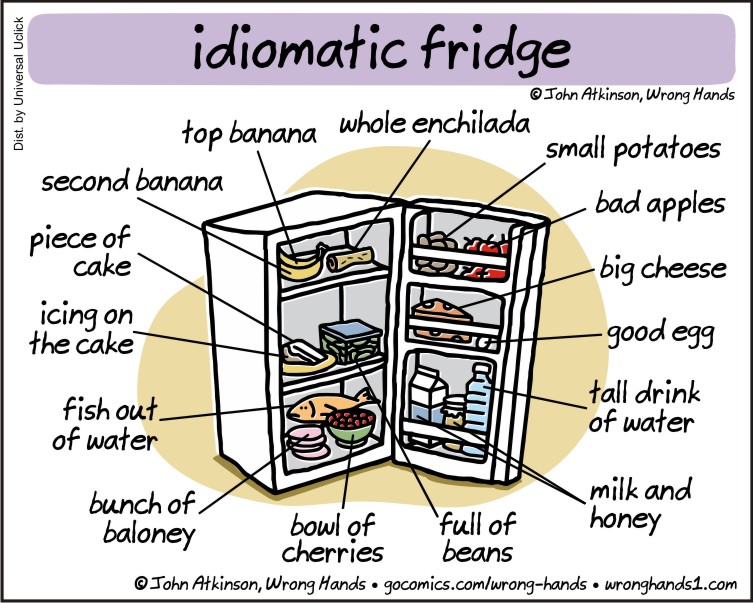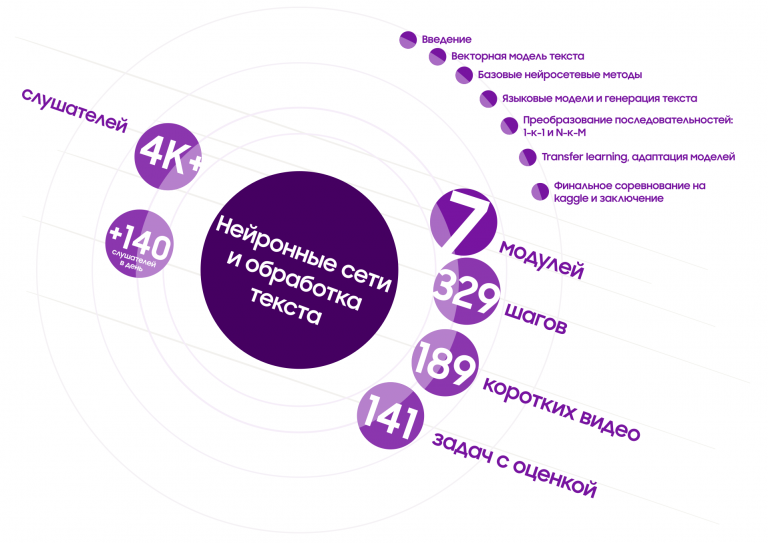Coloring customs statistics. Or how many and what microcircuits are imported to Russia?
When in 2008 we developed microcontrollers of the series K1986VE9x there were many questions. How much Flash should be? how much RAM? how many legs? what interfaces? etc. And although at that moment just making a working microcircuit would have already been a success, we were able to make it so that this series is still in demand and its sales are growing. Partly because of the fact that these questions were then asked and the answers to them made it possible to make a balanced decision. In 2021, similar questions are still facing our company, and even broader. For example, what is better to do in conditions of limited resources: a low-power microcontroller or a miniature Flash or a power supply, and if a power supply, which one? How we were looking for answers to these questions in 2008 and how we are looking for them now read in this article.

The beginning of the path – 2008
How did we answer these questions in 2008? Marketing research, highly paid consultants, experts, analytical reports, life experience? No, none of this works. More precisely, it did not work in 2008, everything was subjective, and was argued only with words. Because there was no data. Nobody could say how many and what microcircuits are imported into the country or how many are generally consumed in the world. Many enterprises did not even have their own internal database on the used items. The sellers did not disclose their sales. There was nothing to indicate things. Therefore, it was decided to rely, as always, on the experience of foreign analogues. Probably all the same marketers STM, NXP and other Renesas better “feel” the market than we do. And although they also will not say for anything how many and what microcircuits they sell, but by the popularity (and hence the mass) of the microcircuit, one can judge based on the variety of the nomenclature presented on the market. Those. the more different variants of a microcontroller with one Flash memory volume from several manufacturers, the larger the market capacity, and therefore a microcontroller with this volume will be more in demand. If among all 32-bit microcontrollers there are the most denominations with ~ 100 feet, then exactly 100 pins is the number that is most demanded by hardware developers. For the analysis, the sites of the leading microcontroller developers – TI, STM, NXP, Renesas, Microchip and the now defunct EnergyMicro – were analyzed. Through the forms for searching for components, we set the required parameter, for example, the Flash volume (16K, 32K, 64K, and so on) and calculated how many denominations the manufacturer gave us, collected and analyzed.
What happened in terms of Flash volume in 2008?
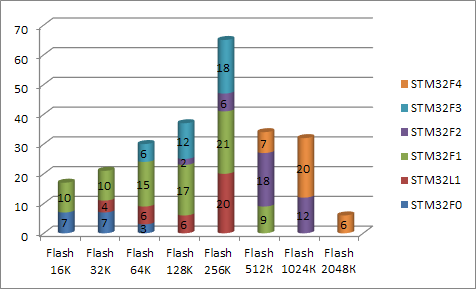
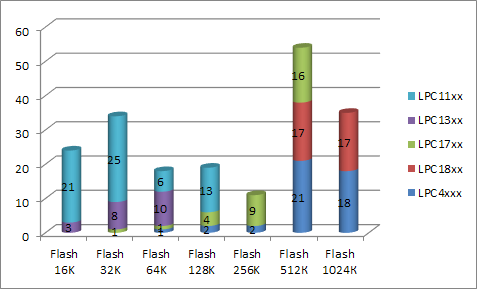
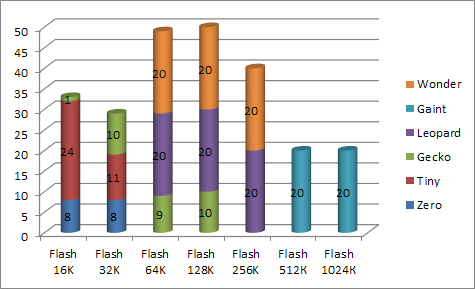

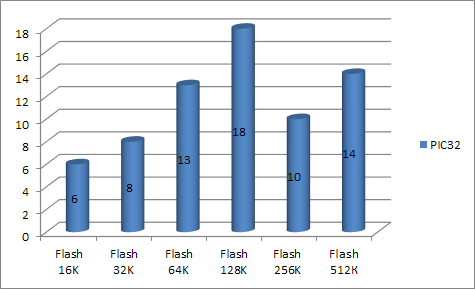

Well, in general for the industry

Once again, this does not mean that the 256KB microcontrollers were the most sold (we didn’t have sales figures in 2008), but it does mean that the 256KB microcontrollers are offered the most in different denominations. And most likely, since they are the most offered, then the market size for them is the largest. Of course, there are many flaws in this method (the same denomination may have different gradations in temperature ranges, and this will be taken into account as different denominations) But that is, that is. A similar study was carried out on the number of pins in the case.
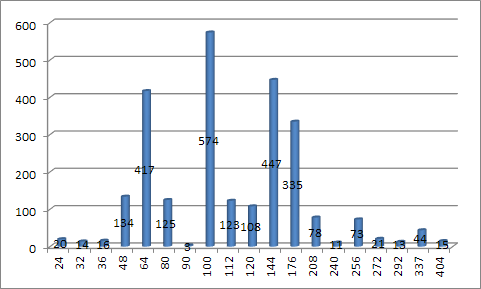
By the amount of RAM and other parameters.

And although not all the results obtained were implemented, on their basis, the requirements for characteristics for the series were formulated. K1986VE9x… And also I decided that I would not collect data in hand-to-hand combat for the second time, and we have computers – let them count.
Nowadays. Big Data
Then there was a lot of things … Bringing to the market, correcting mistakes, new projects, rallies, plans, import substitution, meetings in ministries, pandemic, coronavirus, videoconferencing, and like the icing on the cake – the crisis of the shortage of microcircuits in the world market in 2021 …
All this time we have been collecting data. Many enterprises were already more willing to share their base of imported ECB, someone actually carried out the import substitution program, someone was forced by the authorities. The statistics of the FCS on the import of electronic components and many other data appeared, which already include the real volumes of consumption of microcircuits in pieces and in money. The policy of the Ministry of Industry and Trade of the Russian Federation in terms of preferences for domestic products pushed many civilian developers to look at domestic microcircuits, and the shortage of microcircuits that arose in early 2021 made them really think about switching to them:

What we dreamed about in 2008 turned into a nightmare in 2021. Excel unloads from hundreds and thousands of names of foreign microcircuits began to come to us with a request to suggest analogs, and for this we need:
– find documentation for a foreign microcircuit on the Internet;
– read and understand its purpose;
– to determine its main parameters;
– choose our solution as close as possible;
– cite as a close analogue, indicating the main differences.
And it’s still good if it’s a microcontroller or memory. What is an actuator? In general, the outlook is growing exponentially. But we continue to do this, since it is this knowledge that gives an understanding of what needs to be done and where to develop. But as it was said earlier – this wonderful job can be performed by a computer, not a person. Therefore, we have developed a functionality for automatic selection of the purpose and main parameters for microcircuits based on its name. And immediately the thought arose: what if we “disassemble” not the list of purchases of any enterprise, but all the foreign microcircuits imported through customs at once? And today we will try to “colorize” the customs statistics for 2019. I will say right away that the result was not very complete. In the vast majority of imported microcircuits, the name is not indicated. For example, one of the largest manufacturers of RFID tags imported about 80 million NXP microcircuits with a price of about 3 rubles apiece with the name “Integrated microcircuit”. Also, a lot of discrete components (transistors, diodes …) got into the microcircuit code. They give a large increase in pieces, but practically none in value. After all the clean-ups and still a little manual labor (the largest positions in value and in pieces that were not found automatically and were nevertheless pierced through the Internet), we received a database of imported microcircuits in 2019 from 18 thousand denominations with a total of 85 microcircuits. million and for a total amount of $ 45 million. In total, we were able to recognize 82% by piece and 75% by value. We got interesting statistics that gave us a lot of food for thought.
The general distribution by types of microcircuits is as follows:

Most of all were brought in microcircuits used in power circuits (linear regulators, DC-DC, AC-DC, reference voltage sources, pre-drivers, power switches, LED drivers, etc.) – about 46 million pieces. Then there are unrecognized microcircuits – 15 million.
In third place are simple logic circuits (registers, counters, triggers, ventilators, etc.) – more than 11 million pieces. In fourth place in terms of the number of interface circuits (RS-485, RS-232, USB, Ethernet and so on) – more than 8 million, followed by simple analog circuits (amplifiers, comparators, multiplexers) – more than 1.7 million pieces. I expected more from microcontrollers and microprocessors, but there were 1.3 million of them in total. Most likely, microcontrollers are transported through “gray” channels. And then ADC / DAC – 391 thousand, clock generators – 352 thousand, memory circuits – only 133 thousand (again “gray” channels) and FPGA / CPLD programmable logic circuits – 89 thousand.
How the customs value is distributed among the same classes can be seen in the following figure:

In the first place in terms of cost – Other (unrecognized circuits), in the second power circuits – more than $ 10 million – but this is due to the cost, in third place – FPGA / CPLD – with more than $ 8 million, despite the fact that they were imported least of all in pieces.
If we calculate the unit cost of one microcircuit, then we get the following picture

The most marginal are FPGA / CPLD, in second place are ADC / DAC circuits, in third place are microcontrollers / microprocessors and in fourth place are memory circuits. “Where have you seen these prices?” – many readers will exclaim. This is not for me, this is for customs. But if you decide to start developing microcircuits, then you need to do programmable logic.
Who is more popular than Xilinx or Altera?
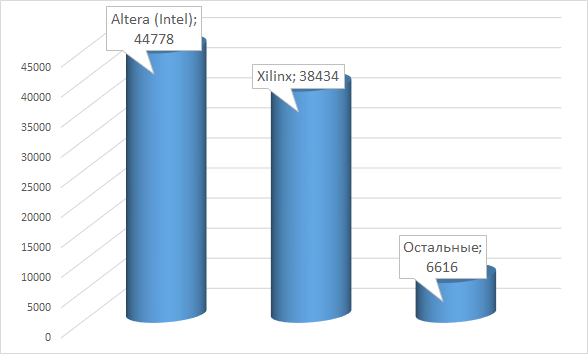
Altera won, although I like Xilinx more. But in terms of cost, Xilinx is in the lead.

It is interesting that other manufacturers also showed a high cost, but the secret is simple – this is due to Chinese radiation-resistant FPGAs, which, by the way, are Xilinx clones.
If you are wondering what logical capacity is the most popular, it will be a big surprise that over 50% of all programmable logic arrays are CPLDs – i.e. small capacity circuits up to 10K logic blocks (up to about 100K gates).

Most used are very small circuits (EPM240, XC95xx) up to 500 logic gates – ~ 20 thousand pieces. The next peak of popularity is the range of 2K-4K logic blocks (about 40K gates) – 12 thousand. That is why we continue to stubbornly “saw” our MLDR125 project.
I think it’s enough to start. Write in the comments what other entertaining statistics to upload in the next part of the article. For example, who makes the most ADCs – TI vs Analog? Or what is the most popular size of non-volatile memory in SOIC8? Who is the leader in Russia in microcontrollers – ST, NXP, Renesas or TI? What are the most popular LED drivers?



